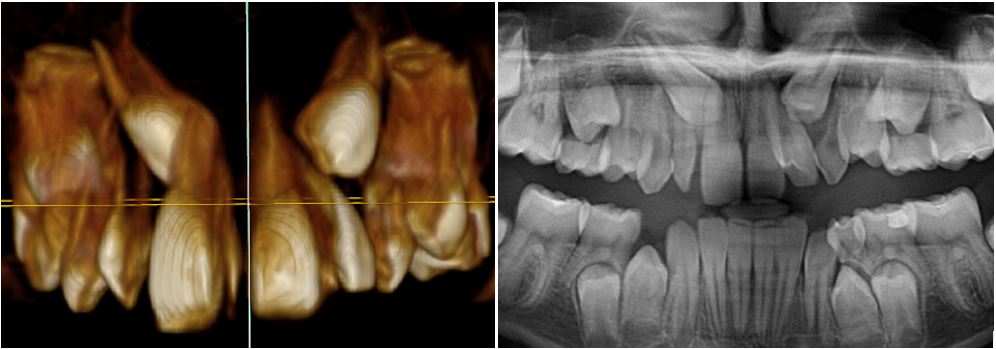
An impacted tooth simply means that it is “stuck” and cannot erupt into a functional position. Patients frequently develop problems with impacted third molar (wisdom) teeth as they are often “stuck” in the back of the jaw and can develop painful infections, among a host of other problems. Since there is rarely a functional need for wisdom teeth, they are usually extracted. The maxillary cuspid (upper “eyetooth”) is the second most common tooth to become impacted. The cuspid tooth is a critical tooth in the dental arch and plays an important role in your “bite”. The cuspid teeth are very strong biting teeth and have the longest roots of any human teeth. They are designed to be the first teeth that touch when your jaws close together so they guide the rest of the teeth into the proper bite.
Normally, the maxillary cuspid teeth are the last of the “front” teeth to erupt into place. They usually come into place around age 13 and cause any space left between the upper front teeth to close tighter together. If a cuspid tooth gets impacted, every effort is made to get it to erupt into its proper position in the dental arch. The techniques involved to aid eruption can be applied to any impacted tooth in the upper or lower jaw, but most commonly they are applied to the maxillary cuspid (upper eye) teeth. Sixty percent of these impacted eyeteeth are located on the palatal (roof of the mouth) side of the dental arch. The remaining impacted eye teeth are found in the middle of the supporting bone but are stuck in an elevated position above the roots of the adjacent teeth or are out to the facial (lip side) side of the dental arch.